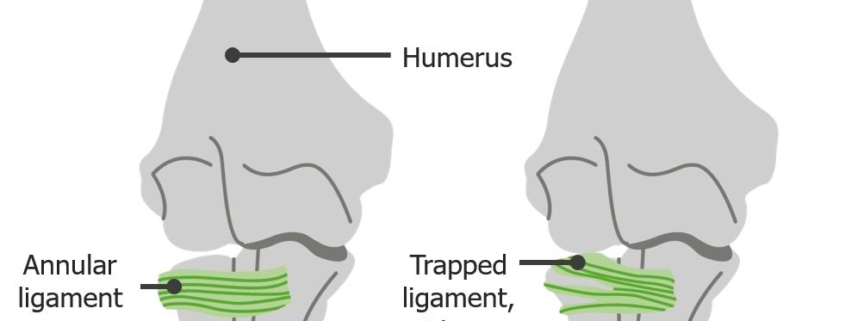
Nursemaid’s Elbow
Overview
Nursemaid’s elbow, medically known as Radial Head Subluxation, is a common injury among young children, particularly those between the ages of 1 to 4. The condition occurs when the radius (one of the bones in the forearm) slips out of its normal position at the elbow joint. This injury can cause discomfort and restrict the movement of the child’s arm.
Types
There aren’t distinct types or subtypes of Nursemaid’s elbow. However, the severity of the condition may vary depending on the displacement of the radius and the presence or absence of associated injuries.
Causes
The primary cause of Nursemaid’s elbow is a sudden pull on the arm. This might happen when a child is lifted or swung by their hands or wrists. It can also occur from a fall or a jerk, particularly when the arm is extended. The underlying reason for this susceptibility lies in the anatomy of a child’s elbow joint, which isn’t fully formed and relatively loose, allowing the radius to slip out of place easily.
Symptoms
Common symptoms associated with Nursemaid’s elbow include:
-
- Unwillingness to use the affected arm
-
- Keeping the arm extended and slightly bent at the elbow
-
- Pain or discomfort when the elbow is moved
-
- Immediate crying or indication of pain following a pull or fall
Diagnosis
Diagnosis of Nursemaid’s elbow is primarily made through a physical examination. The doctor will ask about the child’s medical history and how the injury occurred. An X-ray may be taken if the doctor suspects a fracture or other injuries. However, often, an X-ray is not necessary for diagnosis.
Treatment Options
Treatment of Nursemaid’s elbow involves a procedure called a reduction. This relatively simple maneuver gently repositions the radius bone back into its proper place at the elbow joint. It may cause temporary discomfort, but once the bone is back in place, the pain should disappear rapidly. After treatment, your child should be able to move their arm normally without any discomfort.
In rare cases, if the reduction is not successful or the problem keeps recurring, surgical intervention may be necessary.
Living with Nursemaid’s Elbow
Most children recover fully from Nursemaid’s elbow without any lasting issues. However, if the condition recurs, some practical tips might help:
-
- Avoid lifting or pulling your child by their arms or hands
-
- Teach your child not to participate in activities that involve pulling or twisting the arm
-
- Use appropriate safety gear during sports activities
-
- Encourage your child to strengthen their arm muscles through exercise
When to Seek Help
If your child shows signs of Nursemaid’s elbow, such as refusing to use their arm, holding it in a bent position, or crying when the arm is moved, seek immediate medical attention. Also, if your child has had a significant fall or injury and is displaying these symptoms, it is important to get medical help promptly.
